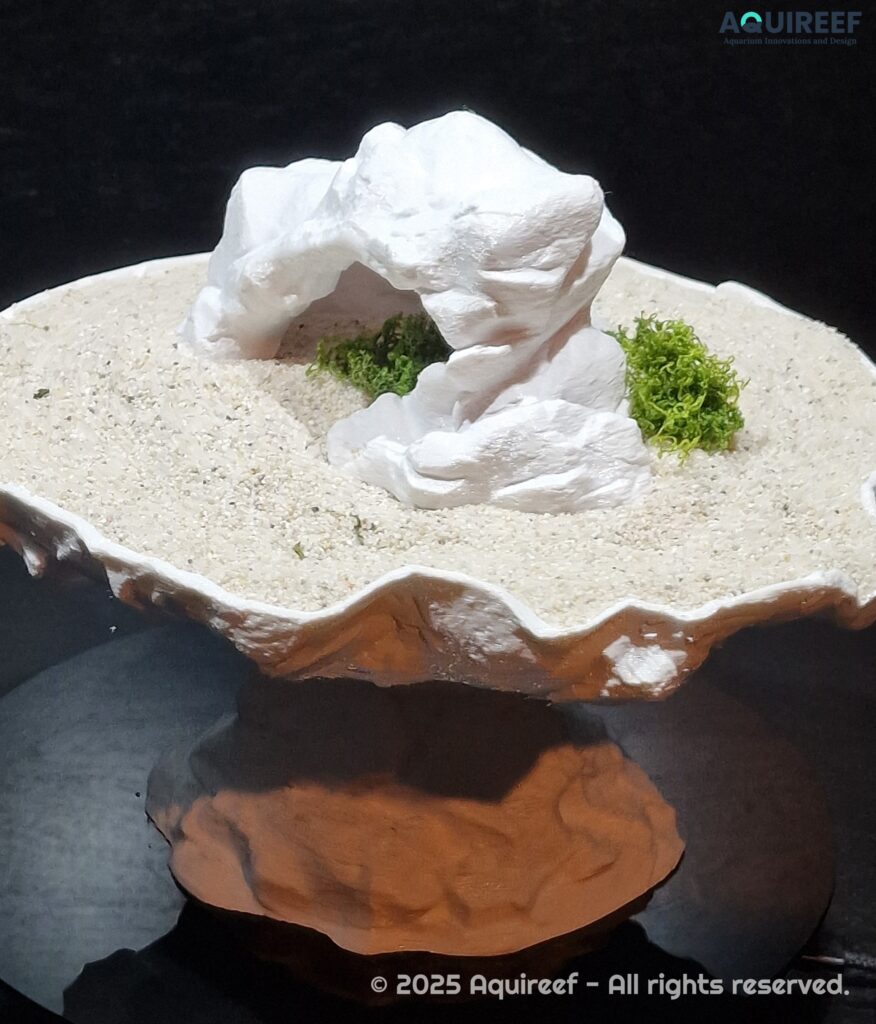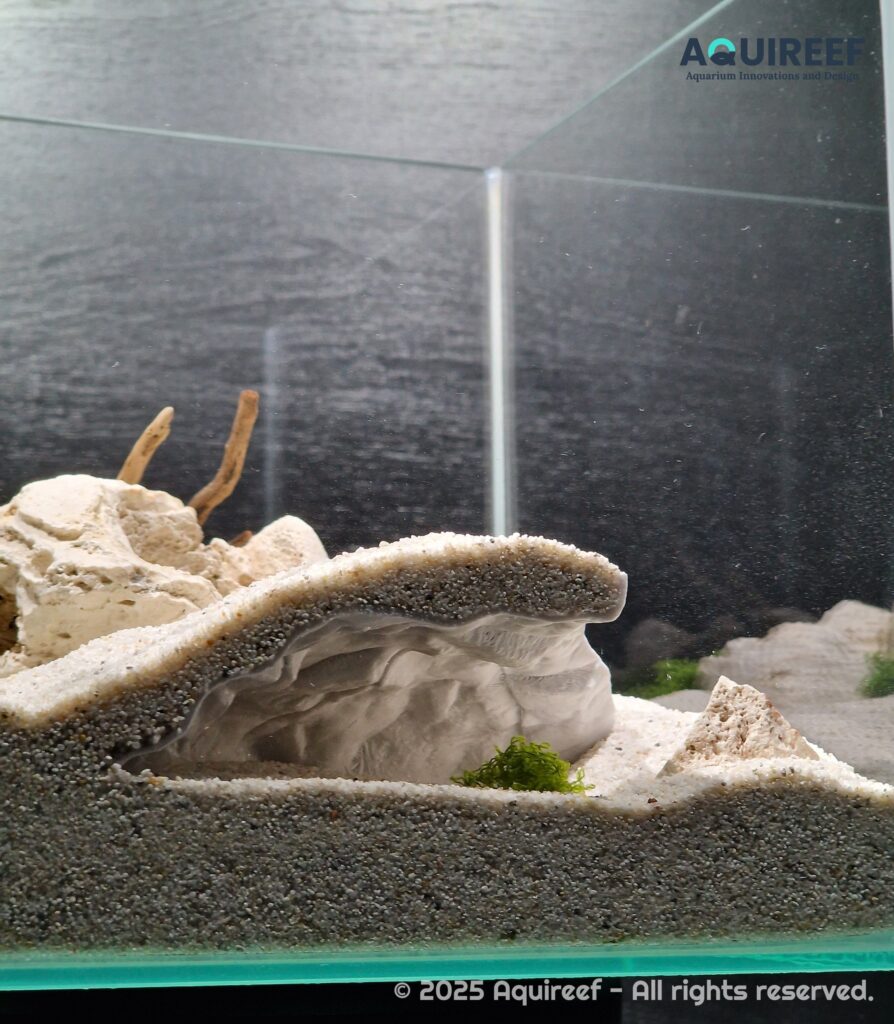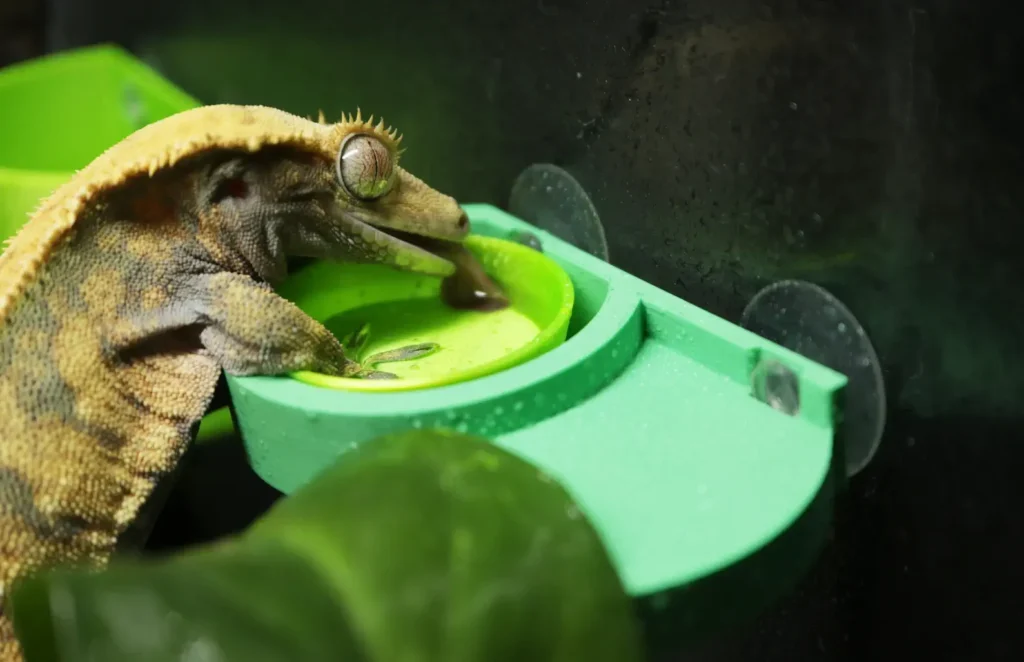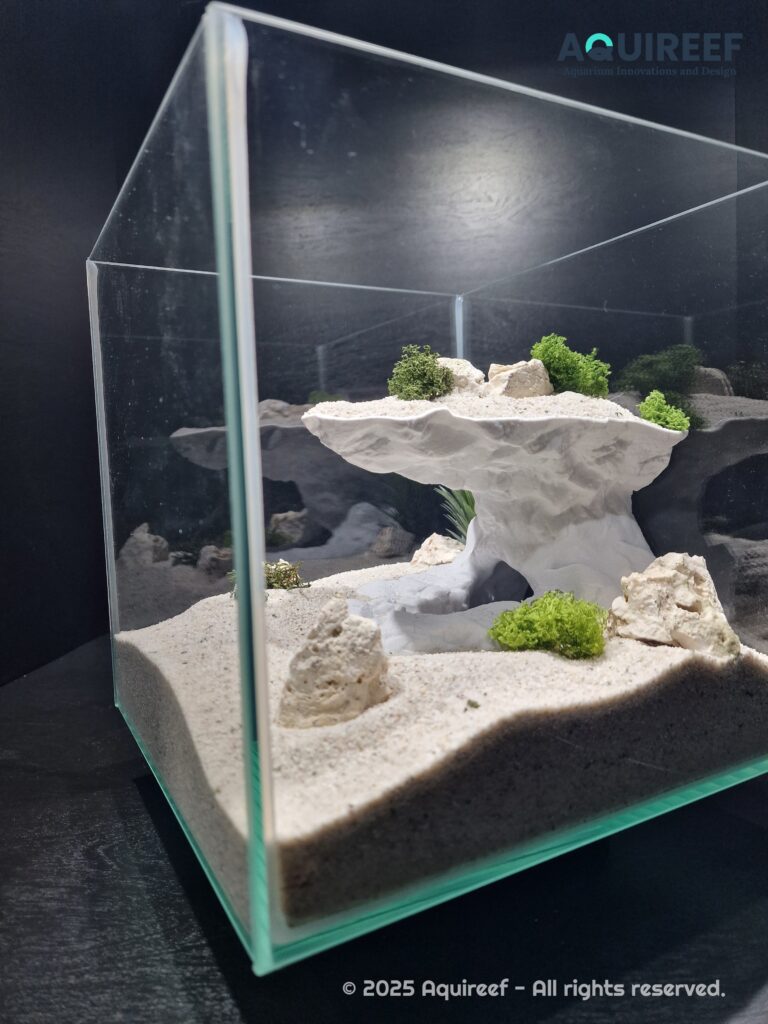Is high volume 3D printing for Aquarium & Terrarium projects always the best choice? Choosing the right size 3D printer for beginners with the right print volume is crucial, especially when creating durable and visually appealing aquarium and terrarium accessories. Your printer’s size directly influences the complexity, durability and efficiency of your projects. Selecting an inadequate printer size could result in excessive post-processing, weaker structures or unnecessary expenses.
Why Consideration of the Print Volume is Essential for Aquarium & Terrarium Projects?
Aquarium accessories like fish caves and decorative items usually require moderate print sizes, whereas terrarium animals such as reptiles and amphibians typically demand larger hiding structures. Thus, high volume 3D printing becomes essential when crafting durable hides and caves in one piece, ensuring structural integrity and visual quality.
Designing modular pieces can help overcome size limitations. However, larger prints are often superior, as they reduce the need for multiple joints, which can weaken structures.
Typical Aquarium & Terrarium Prints and Their Size Requirements
Common projects and their typical dimensions include:
- Caves and Hides: Generally range from 10x10x10 cm (4x4x4 inches) to 20x20x20 cm (8x8x8 inches). Larger structures may require splitting and assembly.

- Rocks and Backgrounds: Modular designs let users create customized, expansive setups tailored to their tank dimensions.

- Platforms and Ramps: Usually between 15–25 cm (6–10 inches), depending on species and terrarium size.

- Feeding Dishes and Ledges: Small prints under 15 cm (6 inches) but require materials resistant to humidity.

- Custom Hiding Structures: Exotic animals might need large, custom hides of 30–50 cm (12–20 inches), demanding increased print volume.

What is a Good 3D Printer for Beginners? Common Mistakes Beginners Make with Printer Size
When trying to figure what is a good 3D Printer for Beginners, avoid these typical pitfalls:
- Underestimating Print Volume Needs: Beginners often choose small 150x150x150 mm (6x6x6 inches) printers, soon realizing the limitations on larger projects: these can’t print larger structures without excessive assembly.
- Overestimating Printer Size: A very large printer (400x400x400 mm or 16x16x16 inches) may seem beneficial, but can significantly increase costs and complexity without providing any additional value.
- Ignoring Print Orientation: Proper slicing, orientation and bed layout can be more critical than simply opting for a larger printer.
- Overlooking Print Failures: Larger prints have higher risks of failure due to poor bed adhesion or unstable frames.
CoreXY printers usually offer better stability compared to bed-slinger designs.
Recommended Printer Sizes for Beginners for Flawless 3D Printing
For beginners passionate about aquarium and terrarium projects, a 250x250x250 mm (10x10x10 inches) build volume is a balanced choice. It accommodates most caves and hides without extensive assembly. If you’re planning larger terrarium shelters or single-piece aquarium caves, opting for 300x300x300 mm (12x12x12 inches) is ideal.
Smaller printers can still handle bigger projects through slicing and assembly with high-strength glue. However, larger print volumes simplify this process, minimize weak joints and enhance the overall structure.
Check out the Best 3D Printers for Beginners in 2025: Your Guide to PLA & PETG 3D Printer for Your First Purchase to help you choose your first 3D Printer!
Print Quality and Adhesion for 3D Printing Larger Designs
Print size alone doesn’t guarantee success: print quality, filament adhesion and stability are equally critical, especially for larger aquarium and terrarium designs. Poor adhesion can lead to failed prints, wasted filament and structural weaknesses.
Ensure optimal adhesion by using:
- Heated build plates;
- Precise first-layer calibration;
- Quality filament choices and the right filament type (PETG or ASA is preferred over PLA for their durability and water resistance). If you’re printing for aquariums, ensure your filament is aquarium-safe to avoid any potential toxicity issues for your fish or reptiles. To deep-dive into filament differences and recommendations, these topics are a ✨ goldmine for beginners:
Related Posts
Based on my extensive experience (over 130 k hours) in 3D printing, for larger, multi-part prints, using specialized adhesives is highly recommended. Based on my five years of 3D printing experience, I strongly advise applying a high-strength glue to assembled parts to reinforce structural integrity and prevent potential breakage. This approach enhances both the durability and longevity of your creations, making them better suited for long-term use in aquariums and terrariums.
Additional Considerations When Choosing a 3D Printer
- Fast 3D Printing vs. Accuracy: Faster printing isn’t always best: balancing speed with quality ensures robust structures.
- Bed Adhesion Solutions: Use textured glass beds, PEI sheets, or adhesive solutions to minimize warping.
- Layer Bonding & Strength: Slightly higher temperatures and slower print speeds significantly improve durability.
- Power Outage Recovery: Large prints (20+ hours) benefit from printers equipped with outage recovery features: the power recovery feature in your 3D printer can save time and filament. Another, widely used option to resolve this problem – use a UPS device to power up your printer in short (10-15 min) power outage situations. A typical 3D printer needs ~ 120W, bigger models require 300-500W to keep them running when the power cuts out.
- Noise Levels: Consider quieter printers if operating overnight or in shared spaces. Larger models can generate more noise.
Conclusion
So, is high volume 3D printing always the key and the ultimate benefit? Not always — but in many aquarium and, especially, terrarium projects, it gives you a serious edge. The right print volume depends on your goals. Small builds like feeding dishes and ledges don’t need massive machines, but when you’re crafting large hides, ramps or modular scapes, high-volume printers reduce slicing, seams and weak joints — all while improving durability and visual impact.
👉 My personal observation and experience shows that for most aquarium setups, a printer with 220x220x250 mm (8.7×8.7×10 inches) volume suffices (a Sovol SV06 ACE* would be a good start for beginners considering it’s quality, print volume and price), while terrariums typically require at least 250x250x250 mm (10x10x10 inches) – a Bambu Lab A1 would be a good choice. Larger projects benefit significantly from high volume 3D printing, ideally with a 300x300x300 mm (12x12x12 inches) printer (a Creality K2 Plus* will do good here), minimizing assembly and maximizing strength.
This paragraph has *Amazon Affiliate links to suitable 3D Printers depending on print volume, suitable machine quality and price.
Choosing a suitable & good 3D printer for beginners, combined with strong adhesion and the right filament, is essential for producing durable, high-quality designs that bring lasting value to your aquarium or terrarium setup.
What now?
⭐️ Ready to take your setup to the next level? Explore this topic with design ideas for inspiration for your own 3D printed aquarium or terrarium projects. Whether you’re a beginner or a seasoned hobbyist, this topic is packed with fresh inspiration, useful tips and ready-to-print designs that will transform your fish tank or terrarium to a completely new level!
💬 Don’t forget to leave a comment below — what’s your ideal 3D printer for the types of prints you make? Let’s share the brands, models and find the best fit together!
- Say Goodbye to Fish Tank Algae: The Ultimate Guide to Cladophora and other Algae Removal
- 3 Aquarium Cleaning Methods That Won’t Ruin Your Tank or 3D Printed Decorations
- Why 3D Print Aquarium Decor Problems Are More Common Than You Think? Stunning Designs, Disappointing Results
- Themed Fish Tank Decorations & Terrarium Hides That Tell a Story
- 3D Printing FAQ #5 – The Funniest, Strangest and Smartest Questions Ever Asked on Google: June 2025
